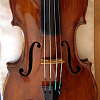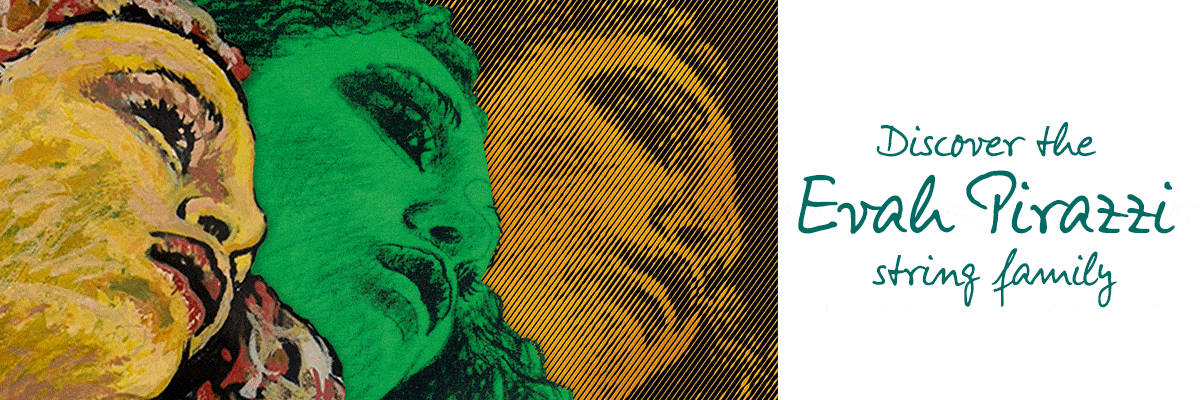
June 2013
V.com weekend vote: What kind of vibrato do you use primarily?
June 28, 2013 10:25This week's question was inspired by the excellent Vibrato Master Class with Shakeh Ghoukasian that I attended last week. It gave me wonderful ideas as a teacher, and for my student who attended, it was a revelation. Afterwards she said, "I GET it!" -- three happy words!
There are two main kinds of vibrato: arm vibrato, in which the entire arm vibrates; and wrist/hand vibrato, in which the hand waves from the wrist. (Arguably there is a third, "finger vibrato," but this is more of a refinement of how flexible the finger is when touching the string, and it happens in concert with an arm or wrist vibrato. Yes, feel free to argue with me about this, I know someone will!)
Some instances work better with arm, others with wrist, but many if not most instances work just fine with either an arm or wrist vibrato. Most people have one or the other that they do better and default to. Me? I'm left-handed, and I came by a wrist vibrato quite early on. "Arm vibrato" was something my college professor taught me, and I found it to be an interesting revelation. I do use it for double stops, very high passages, etc., but I default to a wrist vibrato on most occasions.
Funny enough, my students have evolved their own vibratos -- several were very natural with "arm vibrato." It's great to learn both, but one usually starts with the kind that works best!
So what kind of vibrato do you primarily use, or do you honestly use the same amount of both? Or are you still working to cultivate this skill? That's okay, too!
V.com weekend vote: Have you ever taken, or given, a violin lesson over the Internet?
June 21, 2013 10:08It's easy to get intimidated by all the new technology out there, but it feels more friendly, once we realize we can use it to do our bidding!
I was having thoughts such as these, when writing this week about Nathan Cole and his online violin program with ArtistWorks. It's so much easier to exchange videos, reach people from around the globe and see their faces. A teacher can go out of town and continue to teach his or her students via Skype, the whole time. You can take a lesson or two from an out-of-town teacher, or teach one to an out-of-town student. You can sign up for special programs like ArtistWorks. You can simply go to YouTube and find tutorials. You can make videos for your students to use in their practicing.
I was asking myself the question, have I taken lessons, or taught, via the Internet? I realized that the answer was yes: when I was doing a public school elementary program a few years back, I made a series of beginner videos to help my students practice at home, as they were not getting the one-on-one attention that they would get from private instruction.
So I have a two-part question for the Weekend Vote: Have you ever taken a lesson online? And have you ever taught one, and that includes making instructional videos that you've posted? Feel free to comment with your experiences, teaching and learning online, and to share links.
V.com weekend vote: On average, how many hours a day will you practice this summer?
June 14, 2013 12:12The official start of summer is nearing, and so it's time to talk about how much you will be practicing this summer.
Are you going to make extra progress, or are you going to slack off? Of course, a little vacation time might be necessary, and you probably shouldn't take your fiddle on an outdoor camping expedition.
Still, here is my suggestion: make progress and have some fun with your music this summer. And here is the first step, commit to a level of practicing!
On average, how many hours a day will you practice this summer?
V.com weekend vote: Do you know the history of your current piece?
June 7, 2013 13:16As many of you know, I went to New York last week to attend a big gathering of violinists, where I attended many master classes and pedagogy classes. In one class, violinist and wonderful teacher Brian Lewis advised us to have our students write up short histories of the pieces they are playing. Knowing these histories connects them better with the music they are playing, and it also informs them about how to play it. And this is not just for students who are playing a Brahms Sonata or the Tchaikovsky Concerto, this goes for very young students. For example, did you know that "Witches Dance" really came from "Le Streghe," a very virtuoso piece by Paganini?
Also, violinists who are no longer officially "students" should still keep studying, seeking to know more about the pieces they play. It makes the whole endeavor much more fun! Do you know the history of your current piece?
More entries: May 2013
Violinist.com is made possible by...
Dimitri Musafia, Master Maker of Violin and Viola Cases
Johnson String Instrument/Carriage House Violins
Subscribe
Laurie's Books
Discover the best of Violinist.com in these collections of editor Laurie Niles' exclusive interviews.

Violinist.com Interviews Volume 1, with introduction by Hilary Hahn

Violinist.com Interviews Volume 2, with introduction by Rachel Barton Pine






